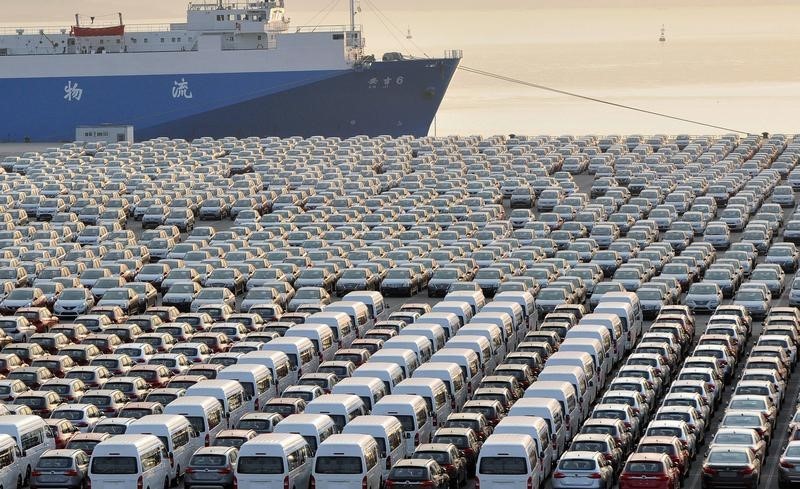By Gina Lee
Investing.com – Chinese exports rose at a slower pace than expected in March despite strengthening global demand, while imports grew at a faster pace, according to data released earlier in the day.
Exports grew 49% year-on-year, higher than the 35.5% growth in forecasts prepared by Investing.com but remaining below February’s 60.6% growth.
Although growth slowed from February’s record gains, export momentum remained strong as COVID-19 vaccines continued to be rolled out globally and a recovery in global growth, albeit uneven, helped boost demand.
“Export outperformance remains a theme in China’s recovery,” Natwest Markets economist Peiqian Liu told Bloomberg, adding that it was due to “a combination of global recovering demand as well as China’s role in filling up the global supply chain gaps.”
Meanwhille, Imports grew 38.1% year-on-year, higher than both the 23.3% growth in Inveting.com forecasts and February’s 22.2% growth.
The surge in imports was due to higher volumes and prices of commodities, Australia and New Zealand Banking Group Ltd. senior China strategist Xing Zhaopeng told Bloomberg.
“Looking forward, while rising commodity prices may increase import costs in the near term, the recovery in external demand could offset part of the impact,” he said.
The trade balance stood at USD116.35 billion, against the forecast USD52.05 billion and the USD103.25 billion recorded in February.
Although the Chinese Ministry of Commerce did not provide a forecast for the country’s foreign trade outlook, it has pledged to push for stable development in foreign trade in 2021. The World Trade Organization, meanwhile, forecast that global trade would increase by 8% in 2021, the biggest gain since 2010, after falling 5.3% in 2020.
The comparison with figures from early 2020, when China entered a COVID-19-induced strict lockdown that shut down much of its economy, also distorted the figures. The distortion led Premier Li Keqiang to urge investors and companies over the weekend to look beyond the ‘base effect’ and use other data and methods to assess the economic situation.
